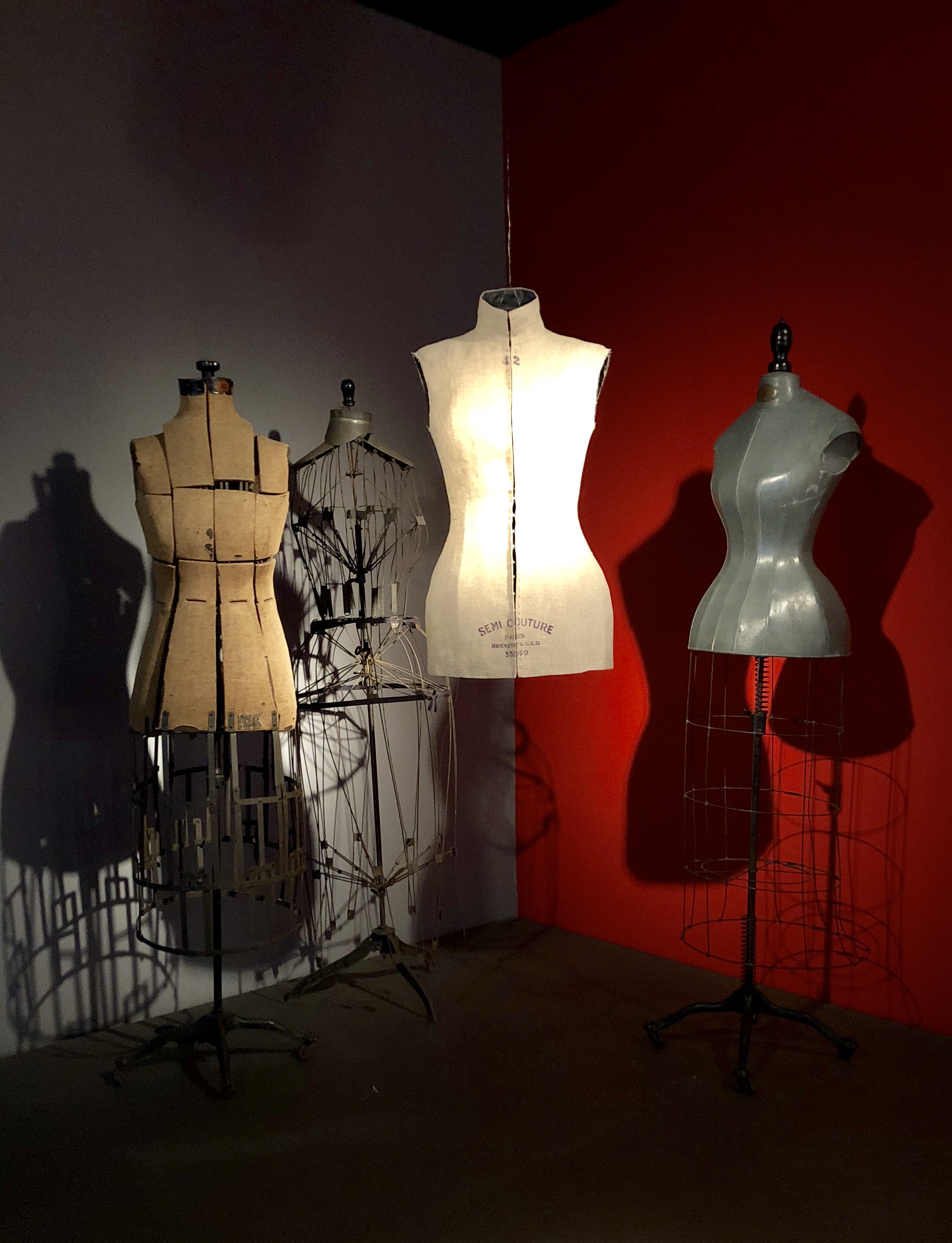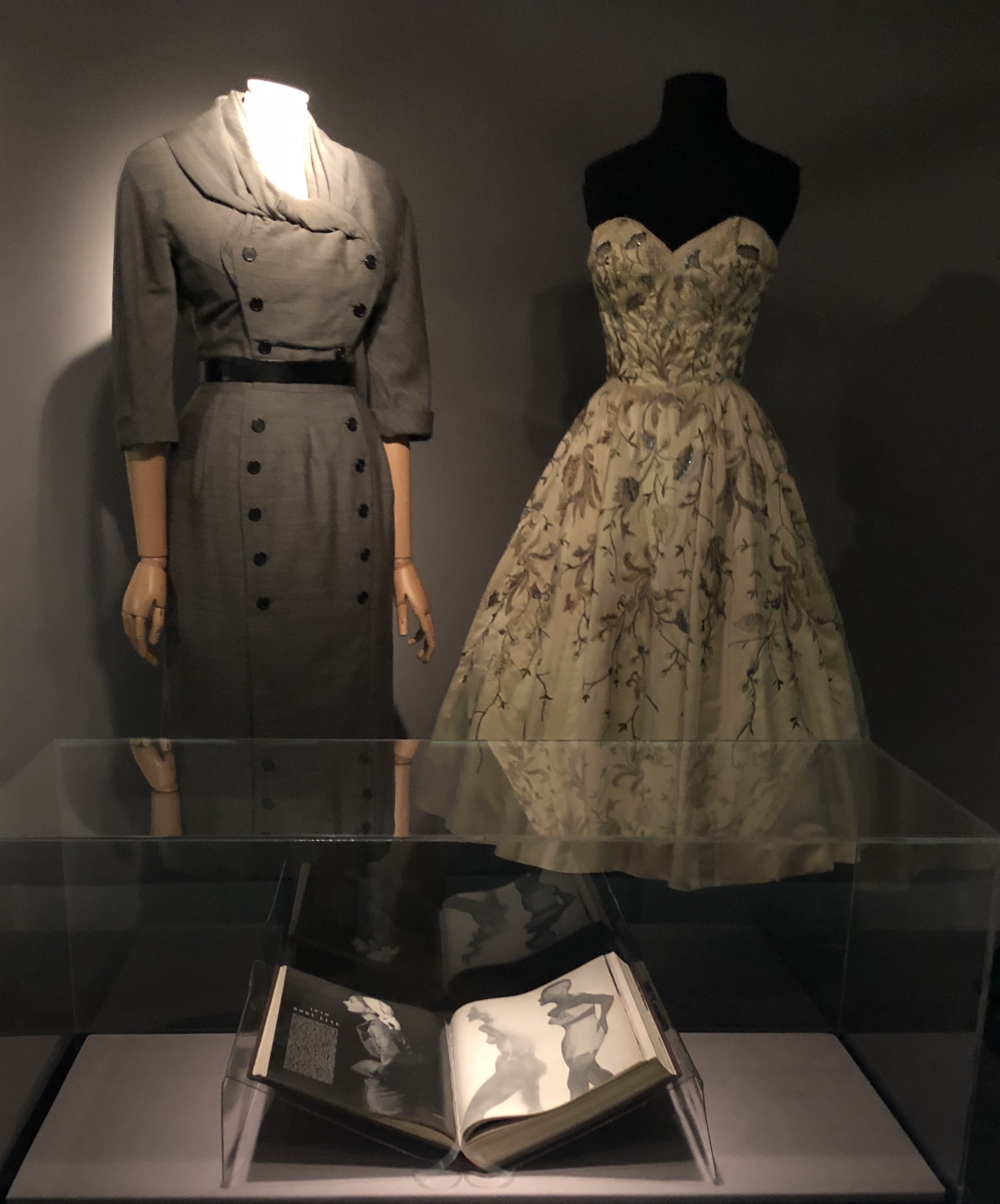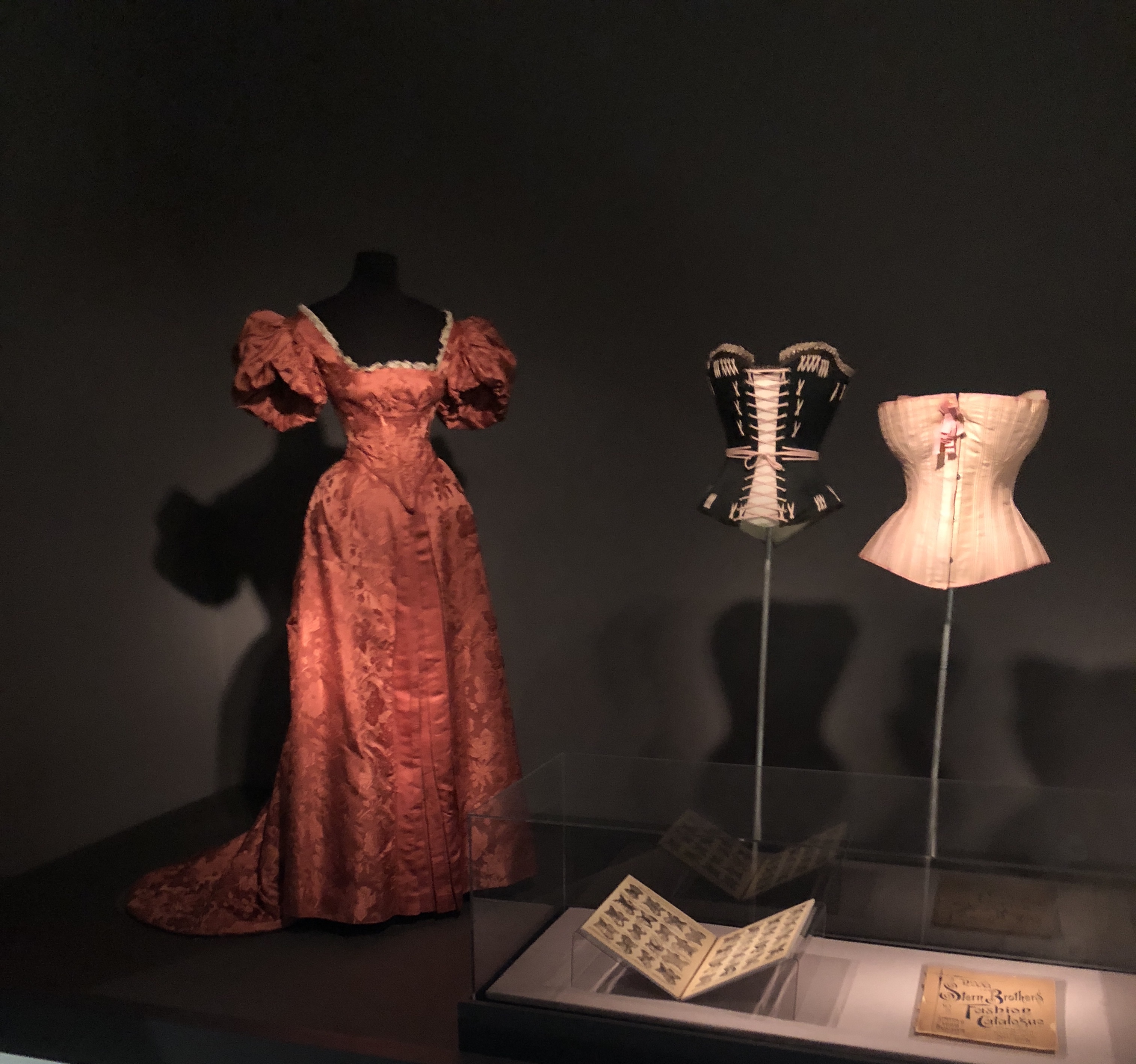This exhibition mainly focuses on the body, garment and the wearer. It displays several pieces from different eras, various trends and dissenting beauty standards. Over the years, the standard of beauty has changed in many ways. Like clothes, individual body shape has fluctuating trends and at one point narrow hips were as ideal as wide hips are today. The several different “ideal” physiques displayed at the FIT museum exhibit the marginalization of body types in fashion culture. I regard the topic of “ideal physique” to be relevant to the current political and beauty industry. It affects consumers as well as the political righteousness of the industry because body shape is often correlated with race. This provokes the question, who are designers really catering their merchandise towards? This also affects personal body image, young girls often possess low self esteem regarding their physique because their shape does not correspond with beauty trends. Another issue that is an ongoing struggle for many women and men is the outside perception of the attire one chooses to wear. Women and men are often thought lowly of when they are dressed “too risque” and are seen as unfashionable or too traditional when they are dressed conservative. Fashion, despite its claims to be supportive of the embracement of idiosyncrasy often have a way of imposing reverse effects on consumers.
The first piece that I find to be particularly inspiring was crafted by Maison Martin Margiela. (tunic & linen Spring 1997, Belgium) Though made to hug the curvature of the figure, it provided full coverage insinuating a juxtaposition of the perpetual beauty standards and social effect thereof. Another piece that I liked was from the 18th and 19th century collection, by Joseph Johnson. (satin & lace 1895, england.) The vast difference between the waist and bust size proves to be a desired feature throughout centuries. The excess fabric at the bottom enhances the slenderness of the waist, leaving the hip size to be ambiguous. I like the look of corsets, so I found Christian Dior’s evening dress to be stunning. (ivory silk satin w embroidery and rhinestones. 1951 France.) The dress exaggerated the figures’ small waist and broke conventions by being more revealing on the chest area. The long skirt, thin waist became a very popular silhouette.
For the purpose of Space and Materiality, I found this exhibition to be helpful because it allowed me to understand the impact of clothes on the body more. Certain pieces were made to alter the body shape in a way that followed or broke the conventions at the time. Attire made it possible for wearers to appear to possess thinner waists, larger hips and bust, broader shoulders or enhance the features that were already existing. This exhibition prompted me to be able to think more ambitiously and granted me the courage to want to work with fashion concepts in the near future.
FIT MUSEUM
- Posted on: March 17, 2018
- By: Victoria
- With: 0 Comments



